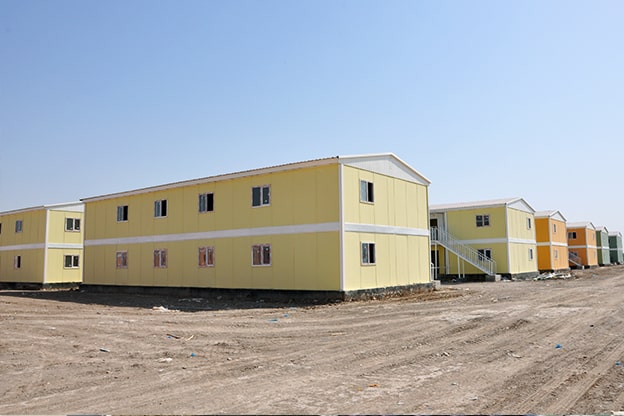As Nigeria’s housing crisis deepens, conventional construction methods such as on-site bricklaying for multi-storey concrete structures struggle to keep pace with the country’s rapid urbanisation.
With building materials rising out of proportion, projects are stretching beyond schedule. This pressure is especially acute in Lagos, one of Africa’s fastest-growing megacities. As its population expands, its traditional building system struggles to match scale and speed.
Along with larger slums, this inevitably puts more strain on public infrastructure.
Recent reports highlight just how deep the problem runs. Experts suggest that the country would need to build at least 900,000 new homes annually to close the deficit. In truth, achieving this entails massive costs.
According to research by the International Journal of Innovative Technology and Exploring Engineering, off-site construction—where the construction is done in factories then assembled in the location—presents a quicker panacea.
A Lagos-based study found that while 87 percent of architects were aware of modular methods, only 32 percent had adopted it in affordable-housing delivery in Lagos State
What makes prefabricated houses different?
Prefabricated houses, also referred to as modular construction, off-site construction, or container houses, are an alternative solution for homes.
Unlike on-site houses, this variety is constructed in factories, ensuring that they can be assembled quickly in their destinations.
Faster construction periods, reduced costs and sustainability are among the outstanding traits of prefabricated houses, remarks Abdul Muideen, an Abuja-based engineer.
“In a typical on-site build, you’re fighting weather delays, labour inefficiency, material theft, and cost overruns,” he says. “With prefab, we build most parts in controlled conditions, assemble them quickly on-site or here in our workshops, and deliver homes far sooner than expected.”
For Muideen, who has produced fully finished sections of homes off-site and installed them within weeks, speed is not the only draw for prefabricated houses. “The quality is higher and mostly affordable compared to brick house buildings,” he says.
Factory-based production allows multiple housing units to be built simultaneously under consistent conditions, reducing errors and material wastage.
Because site preparation and module manufacturing can happen at the same time, projects can be completed within the overall schedule.
Where a brick-and-block home in Nigeria can take anywhere from 12 to 24 months to complete using conventional methods, a prefab unit could be delivered in a fraction of that time–if logistics and supply chains align.
The reason for this efficiency is that materials for prefabricated houses are purchased in bulk and managed under strict inventory systems. Karmod Nigeria, one of the companies pioneering prefab solutions locally, estimates that they can slash costs by as much as as 20 to 30%
The environmental benefits are also worthy of note, as factory precision means less waste and fewer site disruptions.
Moreover, factory-produced modules ensure uniform quality and durability, which are often difficult to maintain in traditional projects.
“The difference is like comparing a handmade car to one produced on an assembly line,” says Muideen. “Both can work, but one gives you speed, standardisation, and less stress.”
A growing number of companies in Lagos—Anija construction and northstone shelter limited, for example—are beginning to experiment with modular designs.
A growing trend with local promise
Even across the continent, the housing solution is also gaining traction. Kenya’s Affordable Housing Programme has piloted modular homes to accelerate delivery times, while Ghanaian developers are partnering with foreign manufacturers to produce low-cost prefabricated homes for middle-income families. Within Nigeria, however, the technology is still new.
Within Nigeria, prefabricated housing is still relatively new, which means that it faces several challenges, like cost. Setting up modular factories requires not only a high initial investment but also specialised machinery.
Without government incentives or financial support, few developers can afford to take the risk. Existing building codes are largely designed for traditional construction, leaving prefab developers to navigate lengthy approval processes not tailored for off-site assembly.
There’s also logistics. Transporting large building modules through Nigeria’s congested or poorly maintained roads can undermine the time savings achieved in the factory.
Amidst these, prefab construction demands technical expertise—from digital design to precision welding, which is hard to source in local markets.
Also, many Nigerians think of prefabricated buildings as imported, low-quality shelters rather than modern, durable homes.
“People hear ‘prefab’ and think of container houses,” Muideen says, laughing.
Nevertheless, prefabricated housing offers Nigeria a pathway to closing its housing deficit faster, cheaper, and with less environmental damage.
It could unlock new opportunities for construction jobs, stimulate industrial production of building materials and ultimately bridge Nigeria’s 20-million-unit housing gap.
Summary not available at this time.






